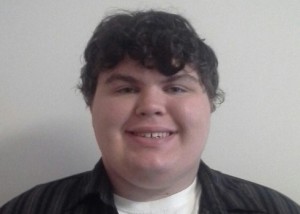
This is part of a feature, “Head to Head,” in which two columnists offer competing views on the same subject. Read Will Chaney’s column in the Oct. 8 Index, or online here.

This year, Truman State declared its campus “smoke-free.” For many, this was received positively. For others, it’s had less of an effect than you’d think. By and large, many people still seem to be smoking on campus grounds despite the potential consequences. Moreover, I’ve yet to see anyone punished for smoking. For a policy that should be making our campus healthier and cleaner, it’s falling flat.
The smoking ban is not the only policy people ignore. However, it is one of the more important policies Truman has, and people violating the ban is a symptom of the real problem, which is inadequate repercussions for those who violate the policy.
This ban is one I fully support for a variety of reasons, though they all can be boiled down to this — smoke directly harms more than just the smoker.
The most obvious example of this is secondhand smoke. If inhaled by nearby nonsmokers, it is called sidestream smoke, a subset of secondhand smoke, according to the American Cancer Society. Sidestream smoke has higher levels of carcinogens and smaller particles than the smoke inhaled bysmokers, making it easier for dangerous chemicals to enter the lungs of those who inhale it. While I admit it would take a lot of smoke to affect my health, I still should be able to control how many carcinogens enter my body.
Another more immediate problem with secondhand smoke is the effect it has on people with asthma. Those who suffer from asthma have a variety of “triggers” that set off asthma attacks, according to the Centers for Disease Control and Prevention. Tobacco smoke is one of the most common triggers for attacks, according to the CDC. Truman prides itself as a safe and clean campus. Smoking is not conducive to that image.
Smoking on campus is forbidden and will be met with academic sanctions, according to the Student Conduct Code. I have yet to see or hear of anyone getting sanctioned, despite the numerous times I have seen smokers on campus. In fact, the Code doesn’t clearly state what the progression of sanctions are. Michelle Horvath, office of citizenship and community standards director, said the first offense usually would result in a warning, according to an Aug. 15 Index article. Anything beyond that is unclear.
Additionally, while students are encouraged to report offenses when they witness them, it never has been made clear where and how a student should report these offenses. The Office of Student Affairs has an oversight position for the policy and presumably is the office students are expected to contact regarding policy violations. But are we supposed to give them a call or are we supposed to stop by their office? It’s hard to assist the enforcement of this policy without knowledge such as this.
I will admit I have seen a noticeable decline in people smoking on campus. Last year, before the ban was created, most of my observations occurred in front of West Campus Suites as people stood by the ashtrays. The ashtrays, however, are now covered up. Ashes and cigarette butts are no longer going into ashtrays like before but instead are left on the ground. This cannot be good for the cleanliness of campus or the environment.
Sophomore Will Chaney observed the policy gives the Department of Public Safety a reason to stop smokers for no reason. The problem with this observation is DPS doesn’t seem to be doing that, or even necessarily trying. There are those who choose to smoke right outside of Baldwin and Barnett Halls with few — or, more likely, no — consequences.
Which brings us full-circle, back to the main problem of the ban — how unenforced it is.Having a smoke-free campus is an admirable goal and I am behind it 100 percent. That said, we can’t get there without an actual effort. The policy is broken practically every day without any punishment or oversight, making it effectively useless. If Truman really is set on being smoke-free, we have a lot of work ahead of us.
